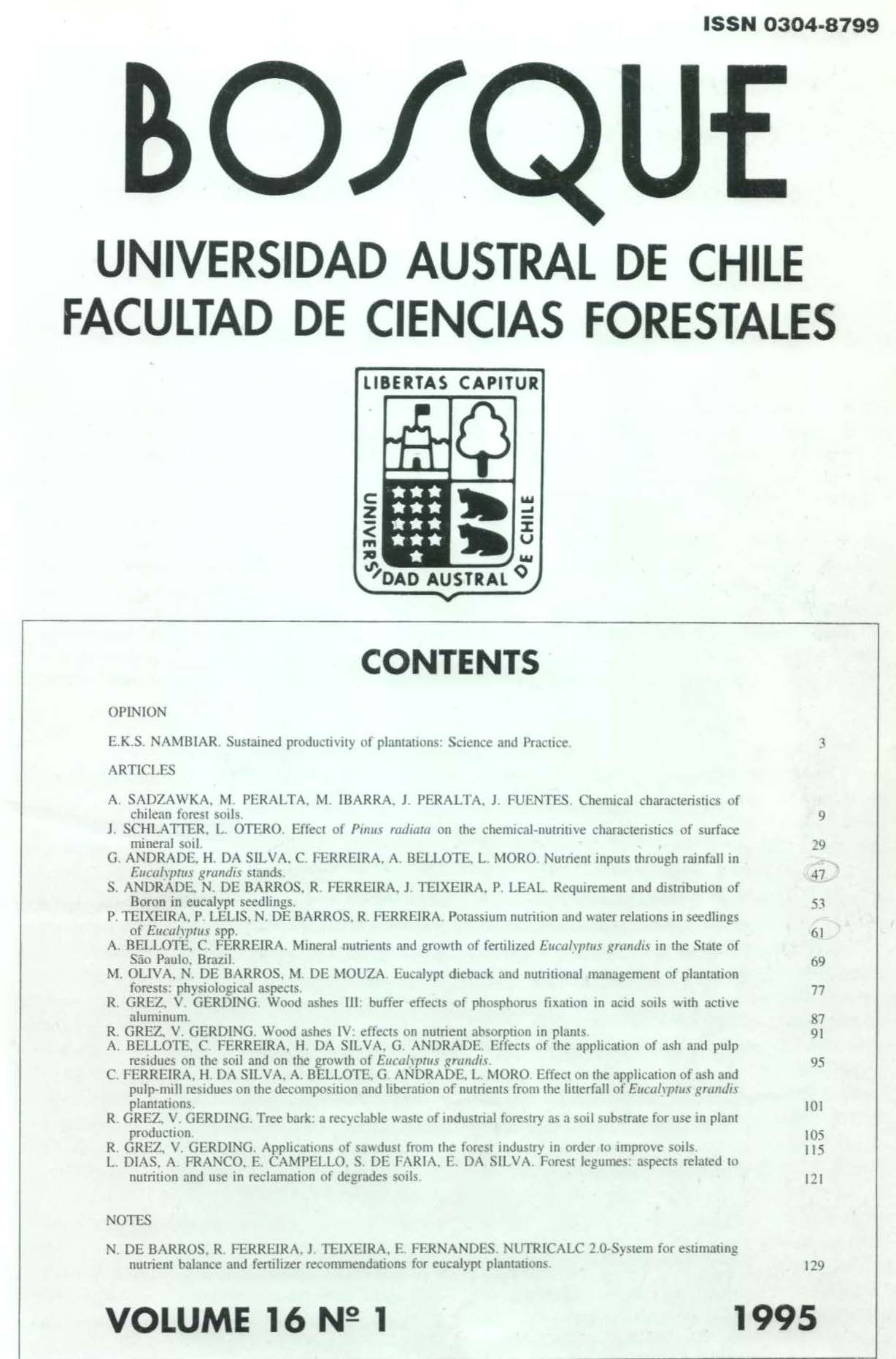Sustained productivity of plantations: science and practice
Contenido principal del artículo
Resumen
The prospects of plantation forestry are good. They are strengthened by several inter-related developments including the expanding role of plantations in meeting the global needs for wood, urgent concerns about the loss of native forests, the potential value of plantations as an integral part of land and environmental care, and the contribution of plantation forestry to economic growth in many countries. Furthermore, timber has many advantages as a construction material over other products including steel, aluminium and bricks, in terms of desirable criteria for low energy requirements and carbon emissions.
Chilean forestry has been in the forefront in recognising the need and opportunity of plantation forestry and has developed a large resource base within a relatively short time. This achievement has been based on exotic species, mainly Pinus radiata and Eucalyptus globulus. These species have many attributes in terms of growth potential, responsiveness to management practices and wood properties. P. radiata wood exceptionally versatile and suitable for a variety of end products and E. globulus is recognised as a premium quality pulpwood. Plantation forests in southern Australia are also based on these species and it appears that the land base in Australia and Chile have several environmental factors in common. What can we then learn from our combined experience?

